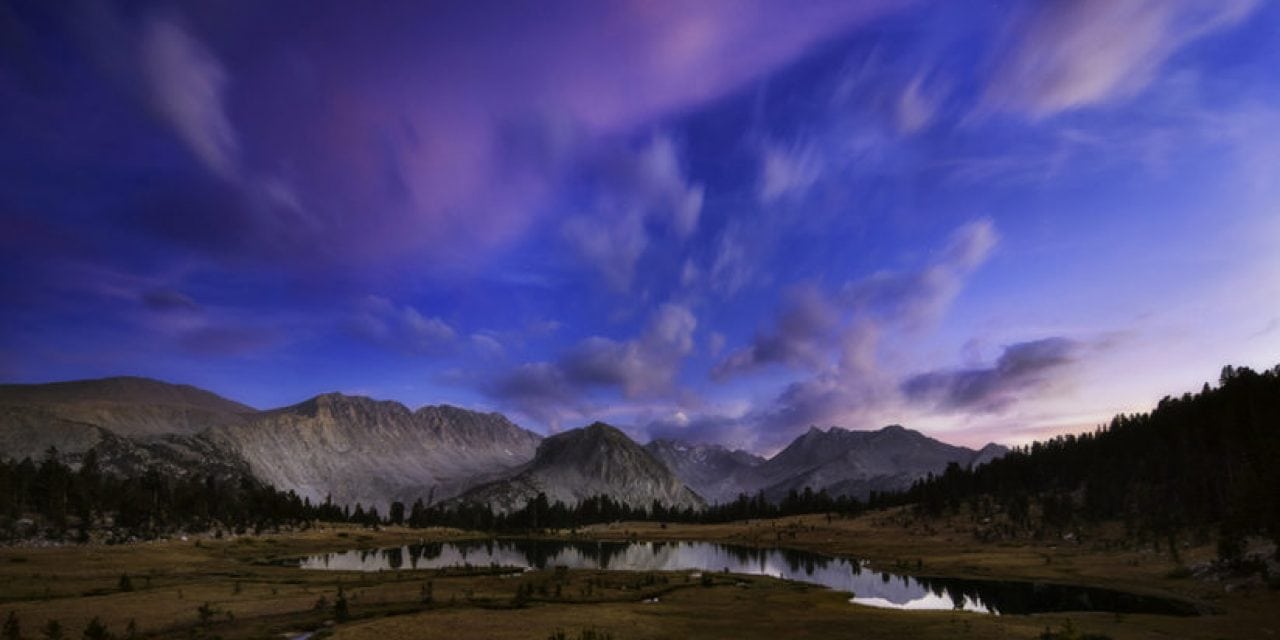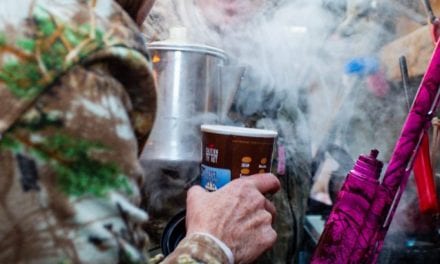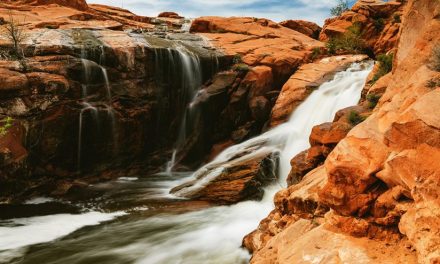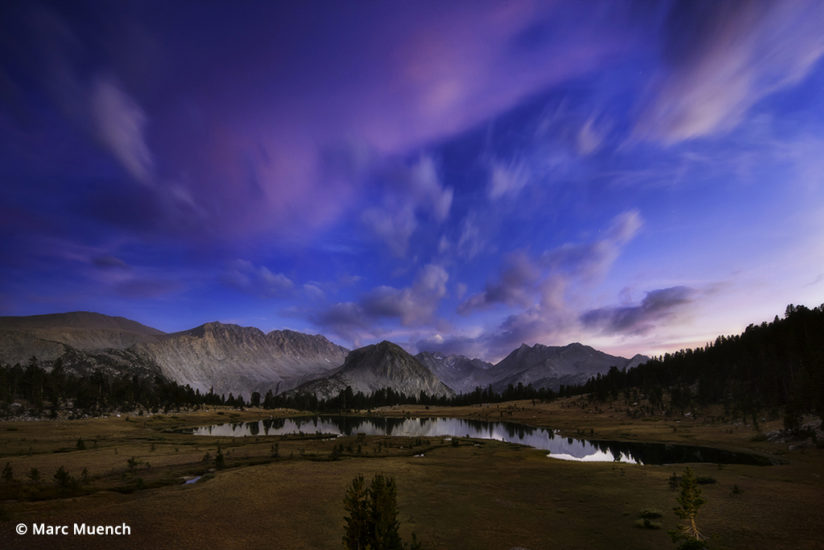
You are standing atop a ridge looking down as the world spreads out below you. Late afternoon sunlight dapples a forest of pine trees that stretches for miles along either side of a winding river. In the distance, rugged mountains rise from the earth, their jagged peaks scraping the clouds above. Where do you point your camera?
Approaching a landscape can be among the most daunting parts of landscape photography. It is also the most important. Everything begins with seeing. But how we see is situational and is influenced by our experiences and familiarity with a location and subject. Photographers Marc Muench, Sivani Babu and Andy Williams discuss previsualization, discovery and how they each approach the landscape.
Marc Muench
For the first half of my life, almost every landscape was new. The West was filled with unexplored regions—lakes, rivers, canyons, forests and glacially capped mountains that I wanted to climb. I was exposed to many of these places at an early age while traveling with my parents on landscape photography excursions. Each visit to a new and wild place opened the door to more intrigue. But we visited many locations more than once and, over the years, they became familiar.
When I began my professional career as a photographer, some of the first places I resourced for commercial and editorial assignments were those I had been to before—some locations I visited more than a dozen times in just a few years. Familiarity meant efficiency, and many of the photographs I made in those places were previsualized.
As my career grew, the destinations diversified. The world was shrinking, and I found myself flying to the corners of the United States and then to Mexico, Canada and the Caribbean. I didn’t realize it at the time, but the way I saw and created imagery was evolving.
I was regularly visiting locations that were totally unfamiliar to me. With no internet at that time, there was little documentation of existing work, and I was forced to innovate on the fly, to create images using compositional skills that were not influenced by other photographers or artists. This was a period of what I call “discovery” landscape photography.
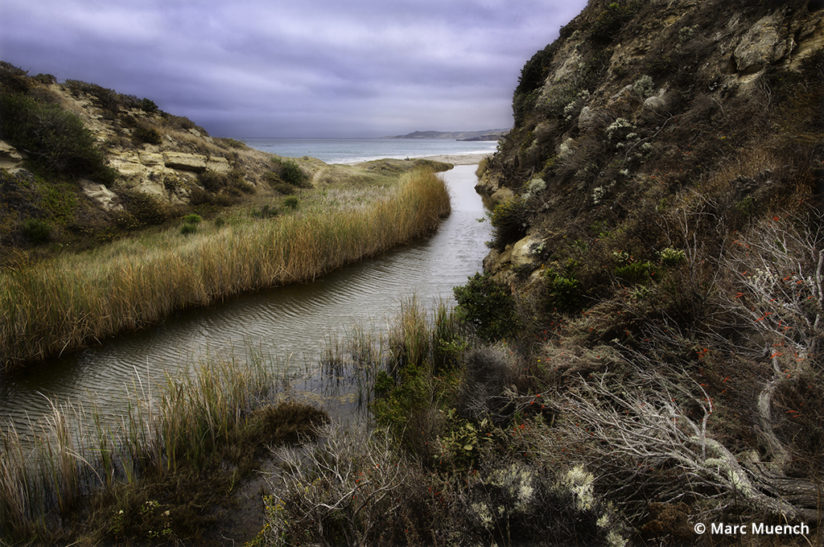
Both landscape photography approaches offer advantages and disadvantages. Both are important. And both have provided me with rewarding experiences and memorable images.
The Previsualized Approach
The white granite is young by geological standards. In fact, so is the entire Sierra Nevada mountain range, which is still growing. Small glaciers cling to some of the high summits—on the northern slopes, where there is less direct sun, and above 12,000 feet, where it is cooler. Waterfalls plummet down the canyons through a maze of steep cliffs and deep alpine lakes, and only take a respite while meandering through the occasional meadow. The scent of the granite mixes with foxtail pine sap, ozone and wild onion. The Sierra Nevada mountains are familiar to me. I’ve been sleeping under the stars, high up in their steeps, for more than 40 years.
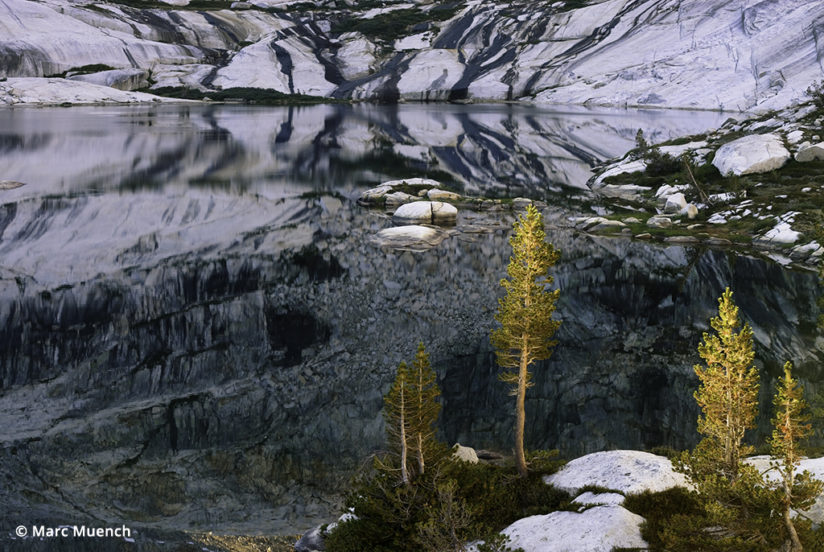
My first memory of the Sierras was a rather long backpacking trip with my parents when I was only 8 years old. At 9,000 feet elevation, at the entrance to the Golden Trout Wilderness, we began the hike on our way to climb Langley Peak, the southern-most mountain in the Sierra that is taller than 14,000 feet. I had no camera. The only images I made were memories: I remember my father composing with his large format camera and carrying it over his shoulder in a leather case the entire way. I remember the trail being hot and dusty, and the nights being cold and dark. I remember the thunderstorms racing across the sky while we summited and the stinging pellets of hail that forced us to seek shelter beneath overhanging slabs of granite. For an 8-year-old, it was all very exciting.
Forty years later, my most recent hike into the Sierras was with a group of friends, all fathers with children from my hometown of Santa Barbara, California. We have been making these six-day trips for about 10 years. Each time, we visit a new location in the Sierras, places like Graveyard Lakes, The Tablelands and others. We spend the days hiking unnamed peaks and high alpine cirques with no trails and the nights telling tales around the campfire. The only schedules we keep are determined by the sun and our stomachs.
Unusually for me, on these trips, I am under no pressure to photograph. Instead, I become more of a sponge, absorbing locations, scenes and good times with good friends. I never intended these trips to become a great creative outlet, but they have. They allow me the opportunity to practice landscape photography as I believe it should be, with the right mix of familiarity, uncertainty and atmospherics that bring out the best in me. My understanding and familiarity with the sights, sounds and smells of the Sierras are born of great nostalgia and give me a lot to work with. Even new locations feel familiar, and returning there feels like hanging out with an old friend.
Another location that became familiar to me was the Channel Islands. Each year for 15 years, I sailed to Santa Barbara Island to catch lobsters. I learned to lobster dive from a good friend, a retired underwater diver named Jack Baldelli, or “Captain Jack,” as I like to call him. One windless midnight some 20 years ago, Jack showed me how to catch lobsters in the dark while free diving. Donning thick, 5-millimeter wetsuits, flippers, gloves and masks, we slid into the water from the back of Jack’s sailboat and began snorkeling to the shallower areas where the lobsters feed on barnacles. The bioluminescence caught me by surprise. Every time I pushed my arms through the still water, the world around me lit up. The ocean came alive.
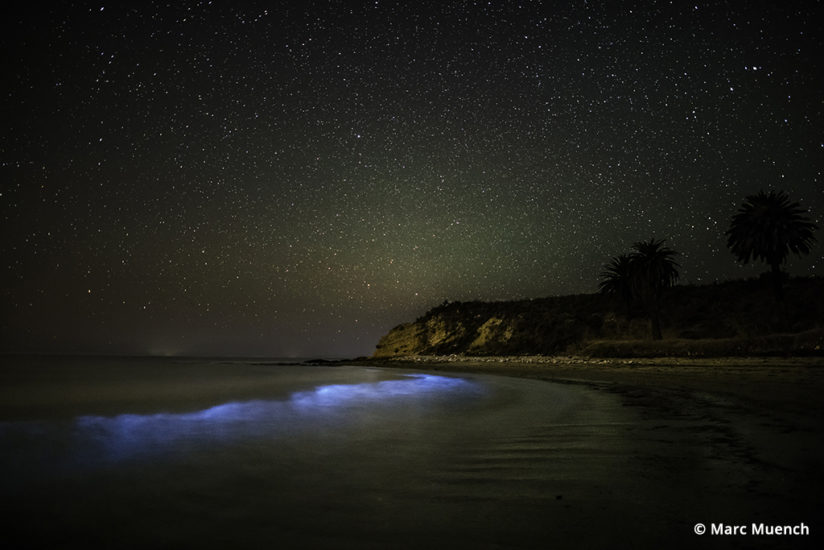
I only caught three lobsters that night, but I was inspired to capture the experience in pictures. For the next 15 years, I saved time to sail with Jack to the tiny island off the Santa Barbara coast at the beginning of lobster season not just to catch the incredibly tasty lobsters but also to create underwater images that reminded me of that first night. I tried many times to find and photograph the bioluminescence, but it never occurred again while I was there, and I had to settle for daylight images. I still carry that first impression with me, though, and to this day, I hope to capture something I experienced 20 years ago. As elusive as the scene might be, it was real, and it inspired me to create more images in a place that became familiar.
The Discovery Approach
I’d been to Iceland many times, but until last summer, I had not been to the interior. The rugged coastlines of Iceland had kept me busy for years with their waterfalls, glaciated volcanoes and aurorae. But getting to know the coastline made me curious about what was just over the horizon, inland.
During the summer of 2016, I finally got the chance to explore the highlands of Iceland with a good friend, climbing partner and photographer, Dan Evans. Dan and I wasted no time after meeting in Reykjavik, driving straight out to a remote inland area. We camped for the next eight days, with only the occasional dip in one of the Icelandic hot springs to clean up and soak. We had no single destination, but rather a list of many places friends had recommended. We were guided by our intuition, our curiosity and, of course, the weather.
Once we veered off of Highway 1, the main road, everything was new. There are few roads in the Icelandic highlands, but driving off-road threatens the amazing little mosses, plants and animals that live there, so we hiked. When we noticed an intriguing-looking canyon or waterfall, we stopped, packed our camera bags with water and snacks, and set out on foot. Even in today’s social media frenzy, there is little literature about the highlands. This made each hike more intriguing and more challenging. We were responsible for choosing where to go, how far to go, and when to go. We made all the decisions about managing our time, our resources and, most importantly, our creativity.
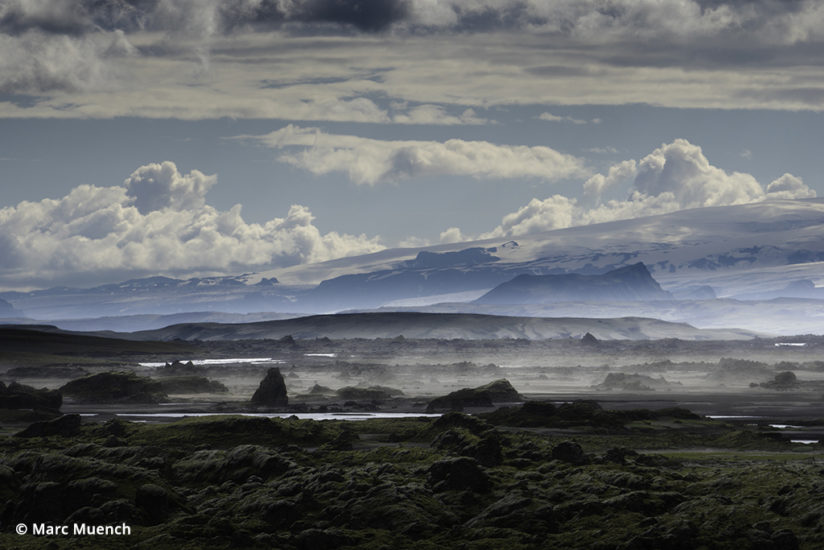
The first region we explored was a remote section of Vatnajökull National Park around the notorious volcano Laki. It was vast, rugged and full of surprises that we could have spent a month exploring.
I studied the horizon with binoculars and noticed what appeared to be spray from a large waterfall several miles away, but because of a hill between us, I could not see the actual fall. It was an intriguing mystery, so we decided to spend the night nearby and hike out to the location early the next morning.
When the sun rose at 3 a.m., we bounced out of the tent and began the hike. There were fissures formed by a volcanic eruption in the 1700s that created the small, moss-covered craters that became interesting foregrounds for images of the vast volcanic landscape at dawn. The pink clouds cinched the deal, and we suddenly became immersed in photographing something completely unplanned.
Although our hike was slightly delayed, we eventually made it to the waterfall — one that neither of us had ever seen in images. Without great light, we simply recorded possible compositions that we could use when we return in the future.
Later in the trip, we set our sights on climbing Hekla, an active volcano. Hekla is not a technical climb but rather a hike up through snow, ice and very rugged volcanic fields of sharp lava. On the drive up to the trailhead, a sign instructed us to download an application that would send us text messages of an imminent eruption.
A 2 a.m. departure got us up through the lava fields and over the snow-capped summit ridge just in time to photograph the sunrise as climbing tendrils of low cumulus clouds danced around the lower ridges of the surrounding mountains and volcanoes. Views of the highlands stretched for miles and wrapped around to the ocean to the south. My eyes feasted on new sights and images I could never have conceived of—images I had never seen in any publication. This was why I had come to the highlands: to experience something new and unusual and to welcome the challenge, as a landscape photographer, that came with that. I was reminded that finding new images in new places is a thrilling part of my art that I love to practice.
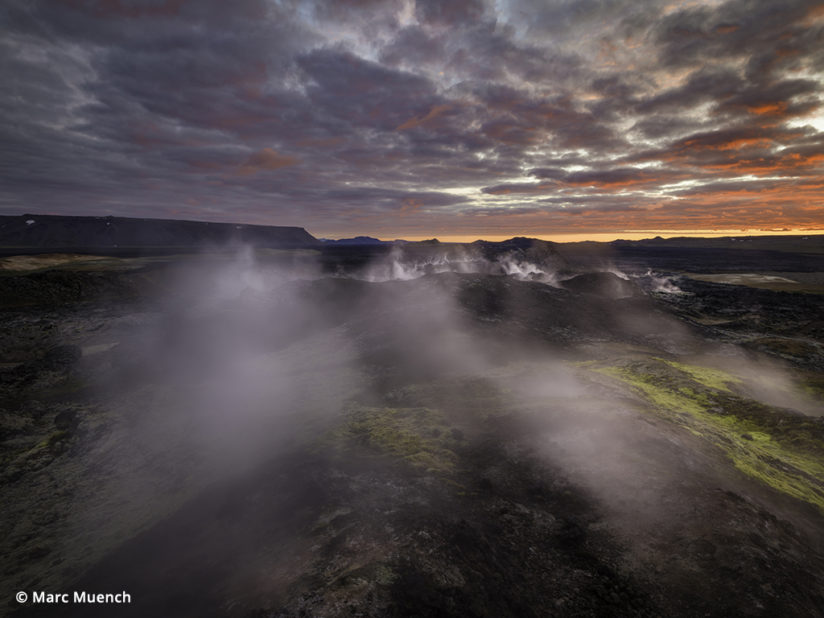
The “Previsualized Approach” is a test of our skills, but, more than that, it is an examination of the depth of our experiences in and knowledge of a location. To become familiar with a place is to understand its character. It is to learn to read the light and to believe that we can capture part of a location’s story. This takes time—weeks, months, even years. The more time we spend, the less we have to rely on the grace of luck.
I’ve heard from many photographers that the most amazing images they’ve ever created were at places they frequented, and that on just that one day, while passing by, they were able to catch “the moment.” But in many cases, the reality of that story is that they only knew to capture that image at that moment because of their history with that place. Familiarity with the subject and location creates a bond that is personal and that is, for me, an incredibly rewarding aspect of landscape photography.
The “Discovery Approach,” on the other hand, is about the act of seeing, and how we work with composition, light and subject. By refraining from researching the images already created in a place, we can all practice the discovery approach. And while we might come to some of the same conclusions about certain well-known locations and vistas, without a preview, we can be more fully engaged in the seeing process, viewing these places through our own eyes rather than the eyes of others. Making these images successful requires focus, energy, time and the one ingredient that we can’t manufacture: luck. In many discovery landscape shoots, luck is the gracing element of true success, but I’ve found that if we’re trying, luck usually shows up.
Sivani Babu
Familiarity is a fluid concept for me. In my work as a photographer and as a travel writer, I regularly find myself in new places, and I am resistant to conducting extensive research about a location beforehand. There are several reasons why I don’t like to know too much before I go, but the most important is this: A place will never look or feel the same as it does during those first encounters. To the greatest extent possible, I want those initial impressions to be my own and not what others have perceived before me. Add into the mix that I am also drawn to places and things that are utterly unpredictable, and previsualization in the traditional sense goes out the window. But the fundamental principle of previsualization—the idea that we must understand something on an intimate level in order to more fully tell its story—still plays a significant role in my craft.
When I fell in love with photography, I fell in love with ice, particularly big ice. Antarctica was unlike any place I’d ever been. There were animals I’d never seen and centuries of history that fascinated me, but it was the ice that captivated and inspired me. It had personality. Through its wind- and water-shaped curves and cracks, it told stories, the tales unfolding as we circled an iceberg and each majestic arch, emerald pool and crystalline icicle revealed itself. I’ve returned to Antarctica several times since that first visit, and more than any single place, it is the ice that feels like home. But Antarctica isn’t the only place with ice.
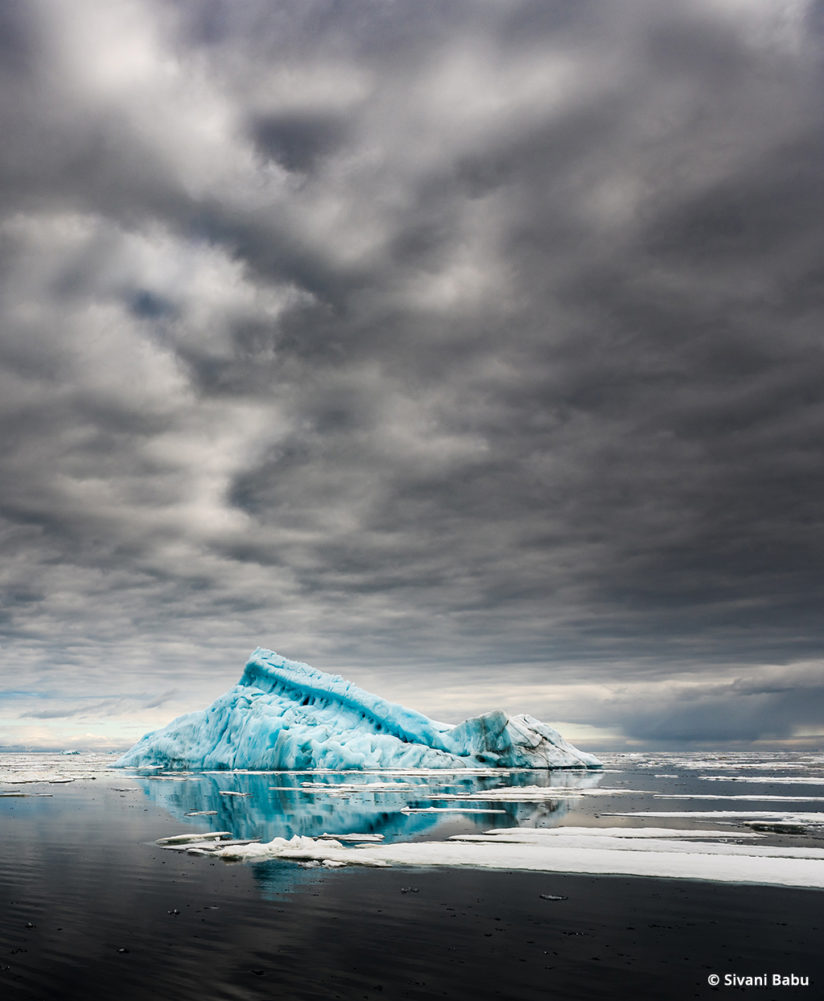
Earlier this summer, a series of fortuitous events landed me in Svalbard, Norway. It was the farthest north I’d ever been. I knew that we would be looking for polar bears and that at those northern latitudes there would definitely be ice, but beyond that, I knew very little of the character of Svalbard before I traveled north. What I found was a landscape that was as foreign as it was familiar: deep fjords cut by the movement of glaciers over millennia; striated hills and mountains; apex predators that sauntered across pancake ice in front of our ship; and icebergs, glacial blue and intricately sculpted by water and weather. The fjords were new. So were the hills, the mountains and the polar bears. But the ice—I knew the ice. And without knowing where we would be, when we would be there or what I might be looking at when we arrived, I could, in a very general sense, previsualize what facets of the ice I wanted to capture.
The images floated in my head. Abstract close-ups of the face of an iceberg with water below, a giant berg with birds in flight set against the blue ice, and monolithic icebergs that conveyed both beauty and power.
One afternoon, as the sky grew dark and the water grew black, I finally saw it—a massive, triangular iceberg floating by itself in a still fjord. Maybe this is the one, I thought.
Its architectural shape with a row of columns set askew vaguely reminded me of an ancient Greek temple crumbling to the sea, and a familiar excitement began to bubble up. Our ship set in for a closer look, and I worked the details, but it wasn’t until we moved on from the iceberg that I got what I really wanted. As we drifted away, the ice became both temple and mountain. Its peak was reflected in the water surrounded by bits of sea ice, and the sunlight, still blocked by a canvas of clouds, illuminated the patterns in the sky. And there in Svalbard, a place I’d never been, I felt the addictive thrill of photographing something I inherently understood.
This isn’t pure previsualization, but it is previsualization as I tend to practice it—a hybrid approach that is rooted in the emotion of connection but that also draws from the discovery approach to landscape photography. It combines my familiarity with a subject or experience with discovering a new place in real time. This approach challenges me to slow down and thoughtfully portray something I know, while simultaneously challenging me to adapt to something that is unfamiliar. When it all comes together, the images made are, for me, the most gratifying.
Familiarity can also be stagnating. That’s where the pure discovery approach comes in.
I grew up a long day’s drive from Northern California’s Jedediah Smith Redwoods State Park, but until a couple of years ago, I hadn’t spent any time in that part of my home state.
Our trip was actually to the Oregon Coast. Marc, myself and another photographer and friend of ours had spent four days exploring the area between Brookings and Bandon, but it rained heavily on our last night in Oregon, and we knew that with a little luck, we could be in for something special just south of the state border.
With rain clouds still threatening to open up and soak the earth, we woke early and headed south until we crossed back into California. Somewhat shamefully, I had no idea what to expect. I hadn’t really been in the redwoods since my childhood. I imagined that we would be walking through the forest composing images of the tallest of trees. It never occurred to me that I might wind up standing in the middle of a gently flowing river mesmerized by a rapidly changing landscape.
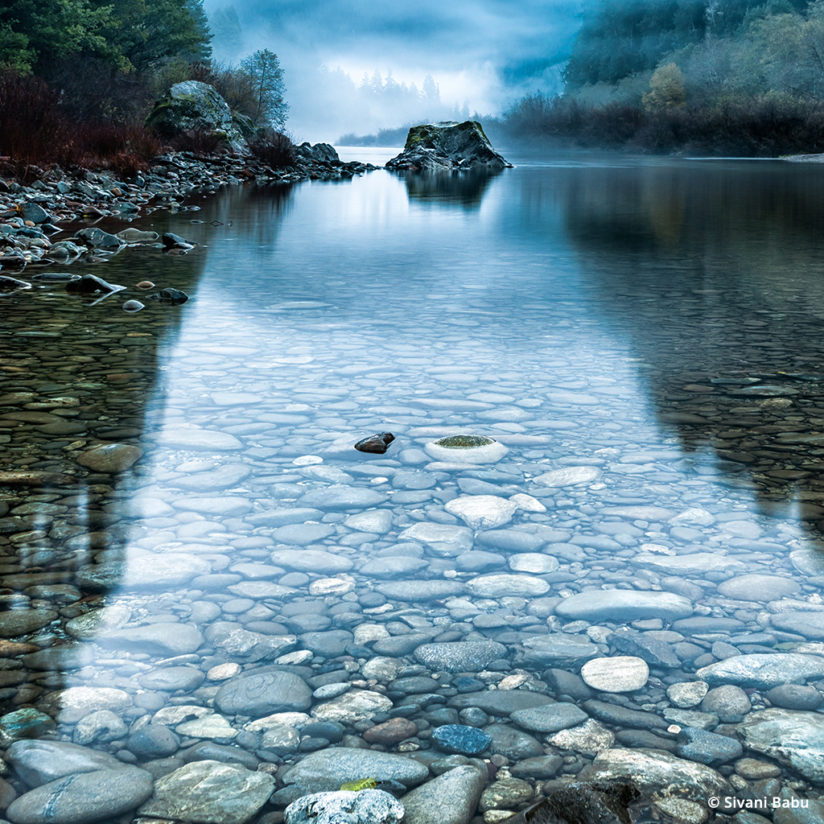
A dense fog hung in the air when we arrived at the turnout by the water, but we could see scattered patches of light, and that was intriguing enough for us to hang around and see what might develop. Rain developed first, heavy enough for us to seek shelter, but, still, we didn’t leave. When the rain let up, we wandered back out and waited. The fog began to lift.
We all walked out to the middle of the river and looked downstream. The reflections of the trees on the riverbanks and the stone-covered riverbed created a path that led straight to a large, glistening rock and then off into an ethereal land where layers of trees played peekaboo with the rolling fog.
And then it was gone. As quickly as it had emerged, the layers faded, the light changed, and the need to catch flights back in Oregon became imminent. It was a magical moment, and there is no doubt that luck played a pivotal role, but so too did our willingness to chase the possibility and our readiness when the image emerged.
I didn’t (and still don’t) have a deep personal connection with the redwoods or with the river in the photo. That kind of familiarity takes more time to build, but seeing and capturing that image was no less an incredible moment, and it provided a challenge that is inherently lost to familiarity.
Andy Williams
I’m the guy who doesn’t read book jackets or watch movie trailers. I don’t want to know too much about what I’m going to experience, whether that’s a story, a film or a place out in the world that I am going to photograph. Previsualizing is not in my DNA, but it is an important and valuable part of approaching landscape photography.
With the constant bombardment of great images from nearly every place on Earth, the real challenge for me with previsualizing is ensuring that I am pursuing my own vision. Every time I’m out photographing, whether it’s a place that is new to me or a place I’ve visited and photographed many times, I feel as if I have all this “previsualization” in my head—a composite of every image I’ve ever seen of a place. My job is to parse that out into something that is my own.
I like to get to a place well before the time I think the light will be best. I want to get a feel for it. I walk around, observing the big scenes and the small scenes. What am I looking for? The short answer is I don’t know, but, ultimately, the correct answer is the right blend of everything I know consciously and subconsciously about the place.
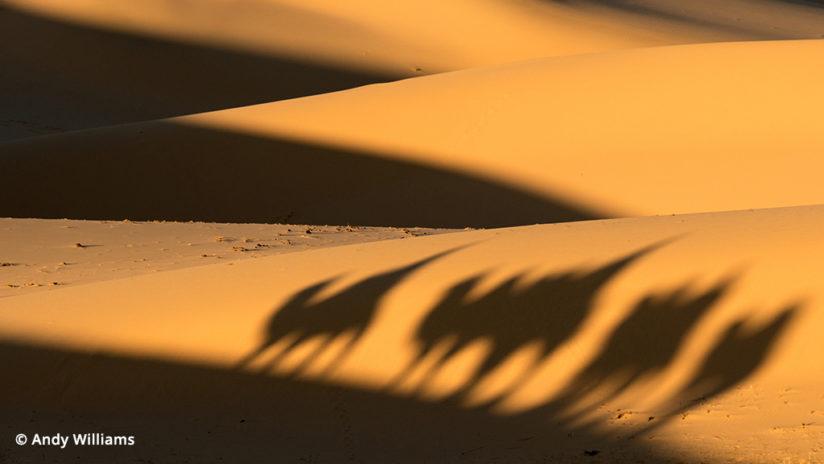
From there, it’s on to execution. I find that if I consciously force myself to do something “different,” then I stand a better chance of making a compelling photograph. I might change perspective by getting really low to the ground, or change focal lengths, shooting a traditional, wide-angle landscape scene with a moderate telephoto lens instead and then stitching multiple shots together. I might shoot with a really shallow depth of field or reach for my infrared camera, or intentionally overexpose or underexpose to draw attention to part of the scene.
In the Khongor Sand Dunes in Mongolia’s Gobi Desert, I had a swirling vortex of imagery in my head, but the image that came up most often was of camels and their riders on a ridge with the setting sun, a perfect combination if ever there was one. But I didn’t find my best shot by looking to recreate this scene. I found my best shot by doing something different. I turned around! And there I found a perfect composition of lines, light and shadow…and those camels and riders.
When I’m photographing, there is no real distinction between the previsualized and discovery approaches to seeing the landscape. There is just one approach, and it is an amalgam of everything I know and everything I think I know about a place before I arrive, and everything I see and take in when I’m there. And only after I spend some time getting to know the place am I best prepared to execute and make a photograph.
The post The Approach To Better Landscape Photos appeared first on Outdoor Photographer.

